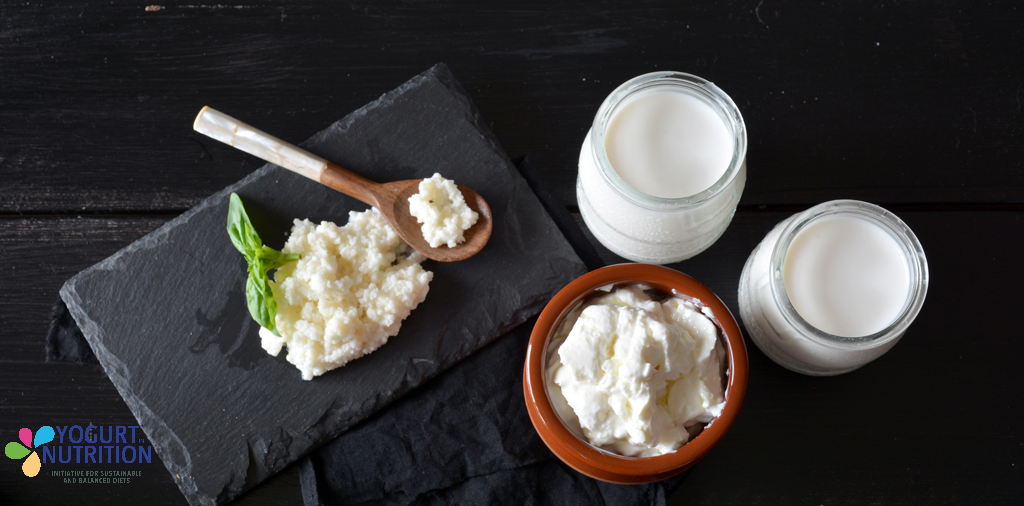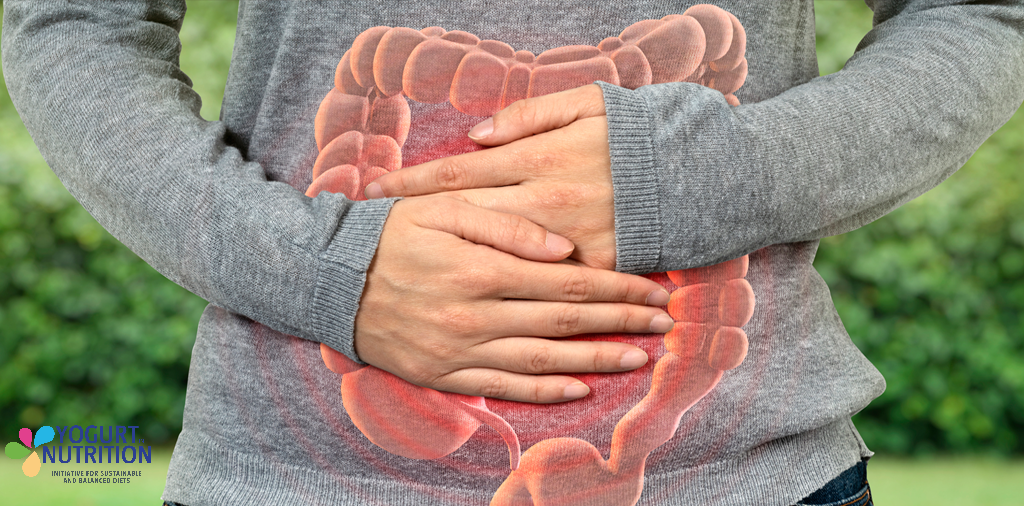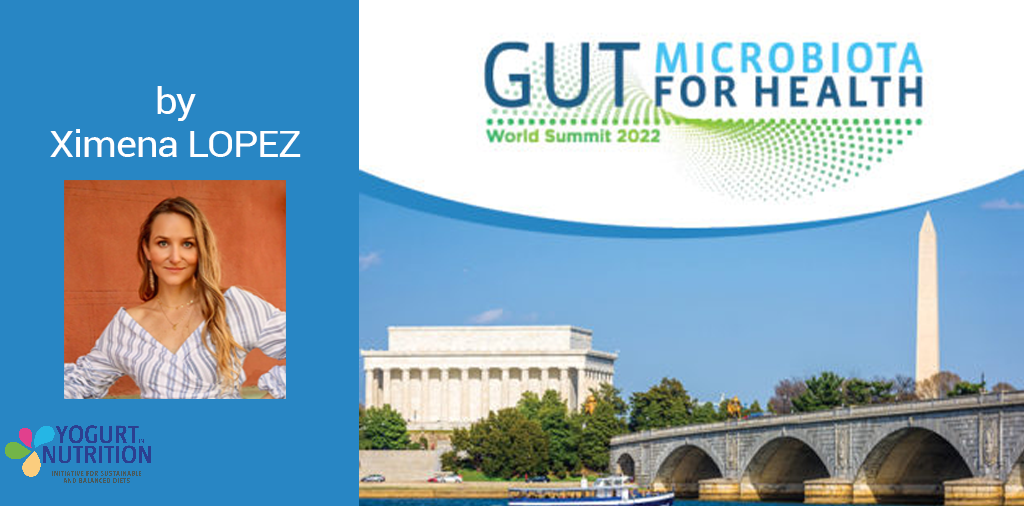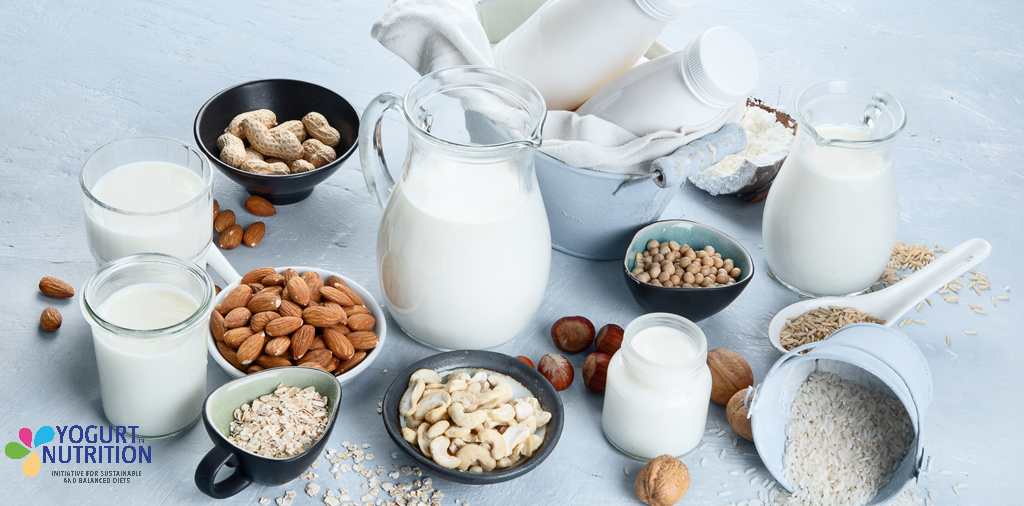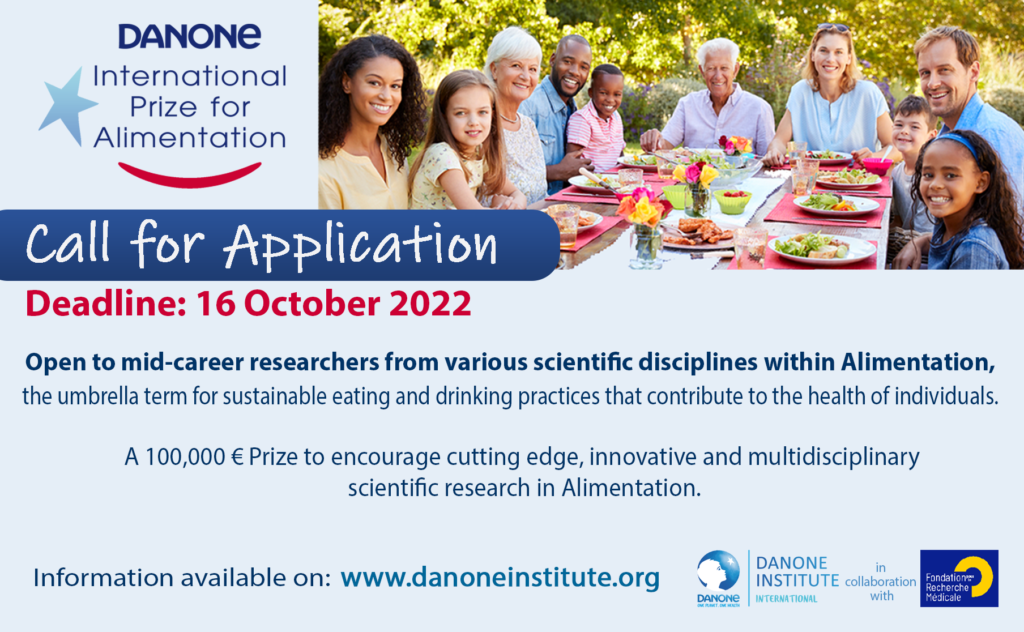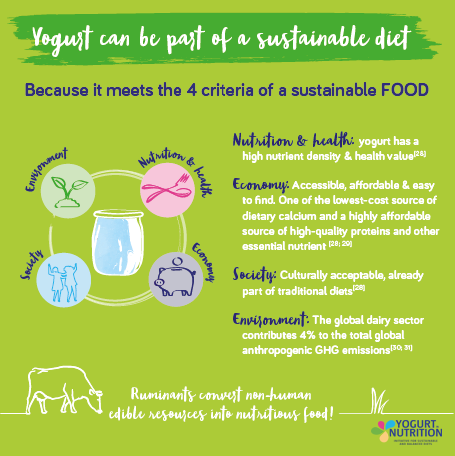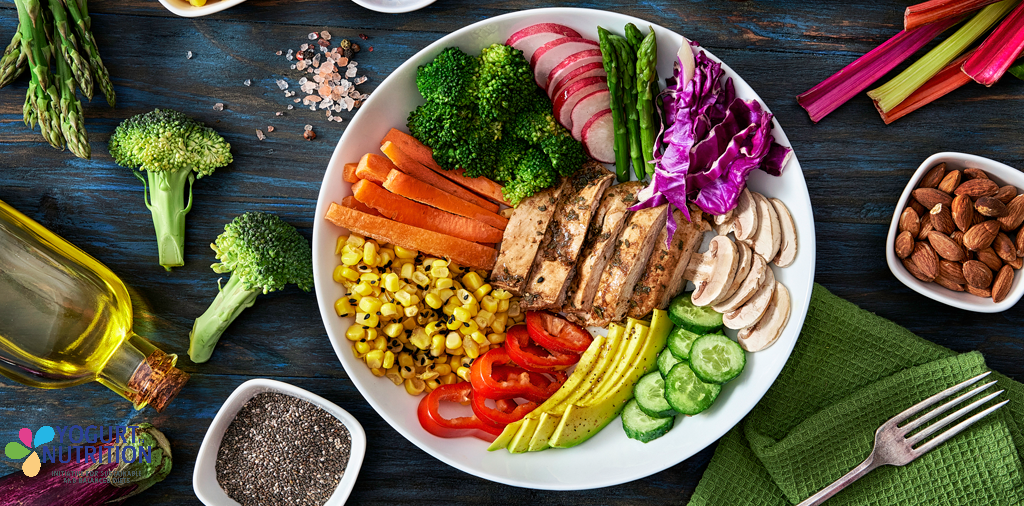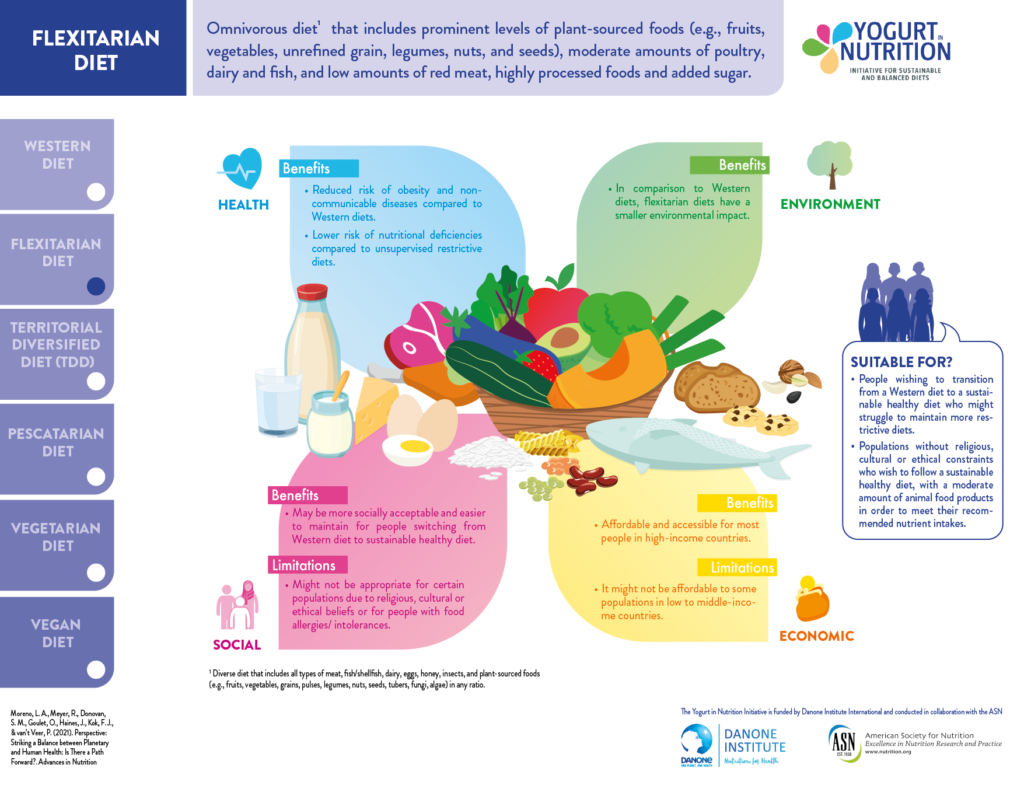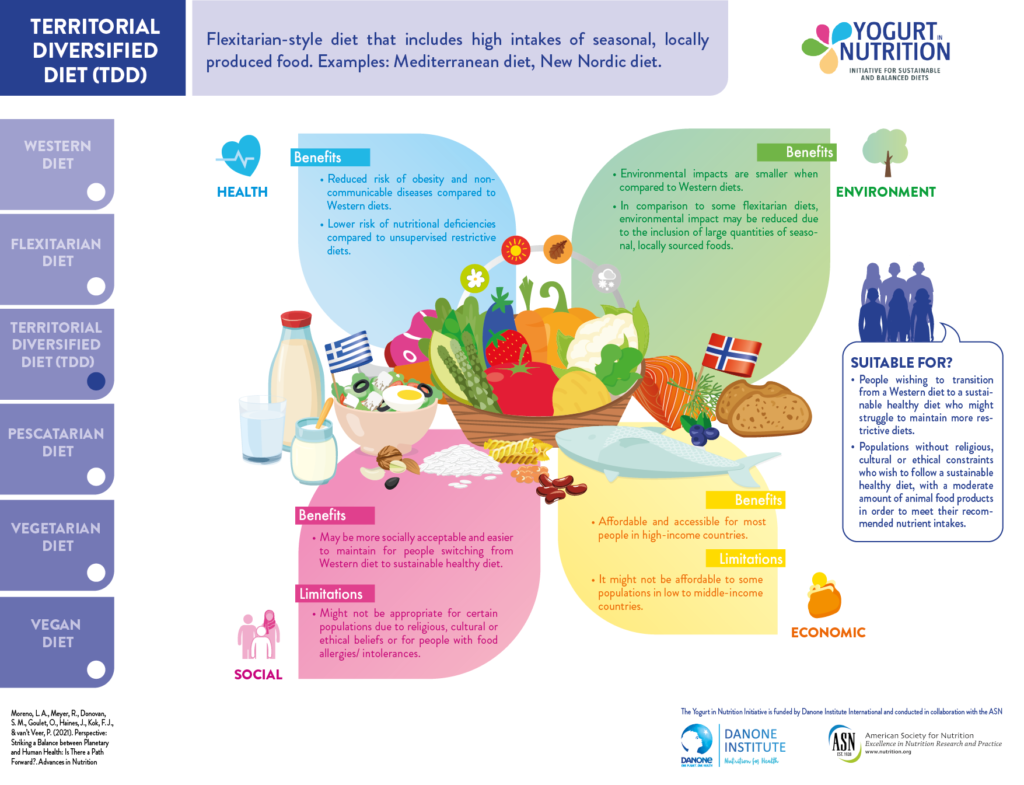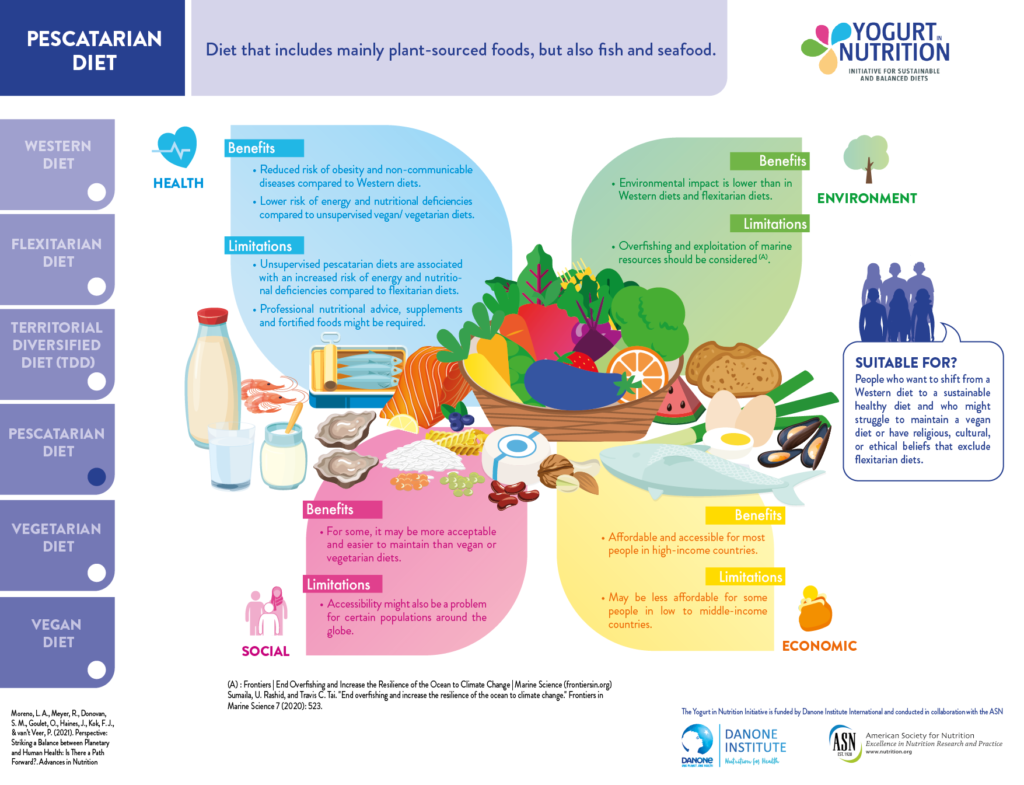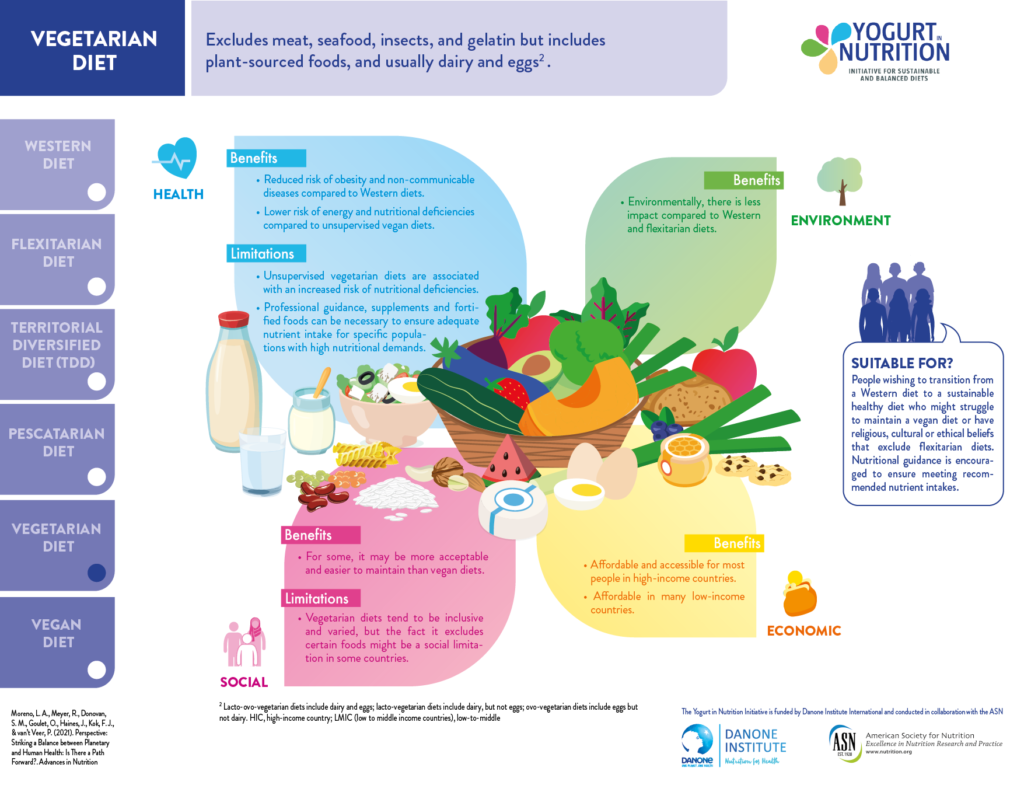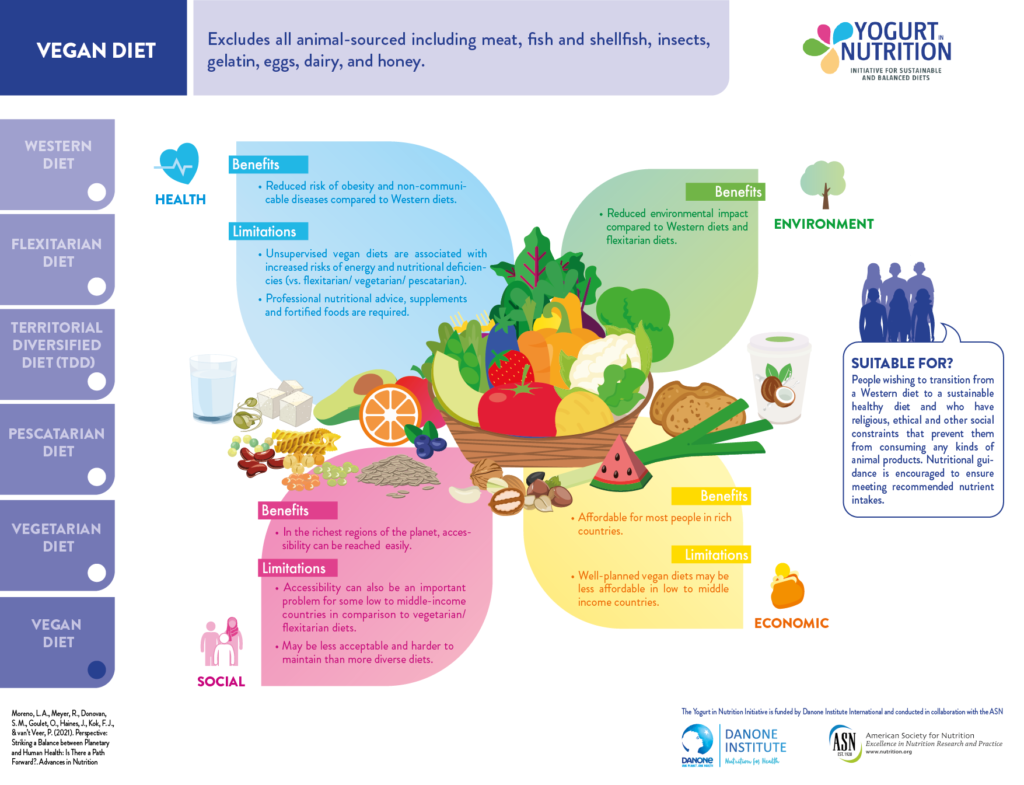ASN Nutrition Live 2022 gathered experts and scientists for 3 days to discuss the latest data and results in many fields of nutrition and health. This year’s session was marked by a large proportion of conferences dedicated to environmental, agricultural and sustainable food issues, among them, the “Climate/Environment, Health, Agriculture and Improved Nutrition (CHAIN) Forum”. It was chaired by Daniel Raiten (Eunice Kennedy Shriver National Institute of Child Health and Human Development Bethesda, Maryland, USA) and John Finley, PhD (USDA Agricultural Research Service Beltsville, Maryland, USA), with the intervention of Kristie L. Ebi, PhD, MPH (University of Washington Seattle, Washington, USA).
Health and environment: complex interactions implicating food system
For Daniel Raiten, environment and health are strongly implicated and both have to be seen with a holistic view, much more complex than it may be primarily seen:
- The environment is linked to natural land, water and climate but also to social, economic or political issues, biological, health and genetics topics and in a context of home community.
- Health and nutrition have to be considered in a global context of non-communicable diseases, infectious diseases, undernutrition, malnutrition or inflammation.
Daniel Raiten focuses on the critical role of the multicomponent food system, which is key in this holistic analysis and may address all the actual interrogations and choices to build for the future:
- How can we address the impact of a changing physical environment, including climate change, on the amount and quality of the food supply?
- Can we produce enough high-quality food in an environmentally sustainable manner to meet global health goals?
- How can we address increased burden of demand on diminishing supply?
Food system: an interconnected system
For John Finley, it was interesting to analyze further the roles, implications and interactions of the food system integrating 3 interacting universes:
- The agricultural industry, which produces our food and focuses on many issues (environmental and economic sustainability, plant-animal health, environment, production system),
- The food industry, which transforms our food and focuses on consumers choices, processing, storage and retail,
- The nutrition, associated with several issues as dietary guidelines, diseases prevention, federal policies and health sciences;
and build on four interconnected and dynamic components: Consumer choice, environment, human health and food production. Indeed, the actual context shows how the system is moving continually, with the covid crisis or the Ukraine crisis impacting food production, agricultural production or human health and therefore impacting the whole interconnected systems.
The main objective of the food system is to provide calories, proteins and micronutrients to feed the whole World population. And as every change impacts all elements of food system, the challenge is to provide everyone with healthy foods, which production remains sustainable for the food system.
Intersection of climate change, food systems, nutrition and health
To go further, Kristie Ebi analyzed more precisely the impact of the actual drastic climate change on food systems.
There are 18 countries considered at high or moderate risk of food insecurity. And, as all systems (climate, food, ecosystem, socio-economic) are interconnected, the climate impact is not neutral in this food insecurity. Indeed, several major factors are putting food security at risk:
- Covid
- Conflicts
- Vegetation deficit
- Excessive rainfalls
- Global warming
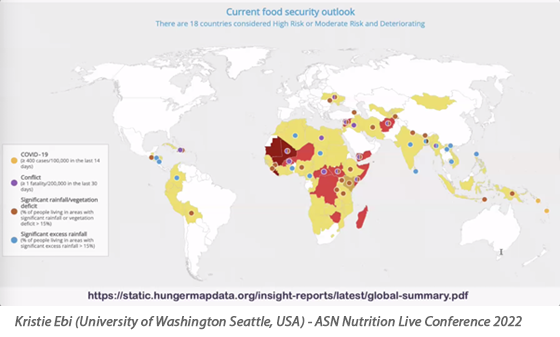
Human influence has warmed the climate at a rate that is unprecedented in at least the last 2000 years. Climate change is already affecting every inhabited region across the globe, with human influence contributing to many changes in weather and climate. It affects:
- heat waves, affecting cropping areas and harvests
- agricultural and ecological droughts with significant impacts on soil moistures
Projected changes in extremes are larger in frequency and intensity for every additional increment of warming. The impacts will be greater in region where food insecurity is already at risk. And all aspects of our food system are impacted by the extreme climate changes and global warming:
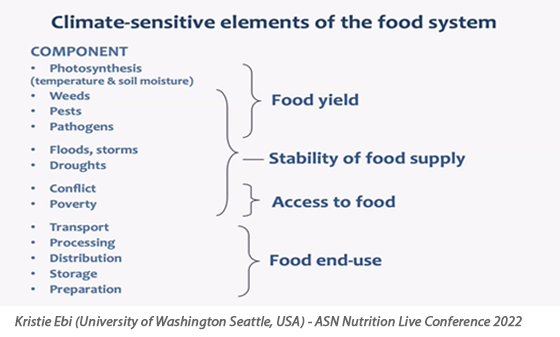
By 2050, model projects that climate change will:
- lead to per person reduction of food availability, fruits & vegetable consumption, red meat consumption
- result in 529 000 climate-related death worldwide (most deaths projected in south and east Asia). Adoption of climate-stabilization pathways would reduce climate related death by 29-71%
Climate changes impacts also mostly food supply instabilities.
For example, the global warming changing the temperature of the ocean impacts the fishing areas and industries as well as food supply to local population.
And we go further on plant production, the effect of global warming is plural. Despites the extrem heat waves and drought, there are impact of the photosynthesis and global nutritional quality of the plant.
Photosynthesis removes the carbon of the CO2 and incorporates it into organic molecules. High CO2 and warming temperature are expected to alter the nutritional quality of the 85% of the plants (which are the most plant-based component of the diet: wheat, rice, barley, potatoes); with less protein and essential micro-nutrients, and more carbohydrates. That would lead to a global malnutrition with a combined risk of deficiencies of micronutrients (iron, zinc).
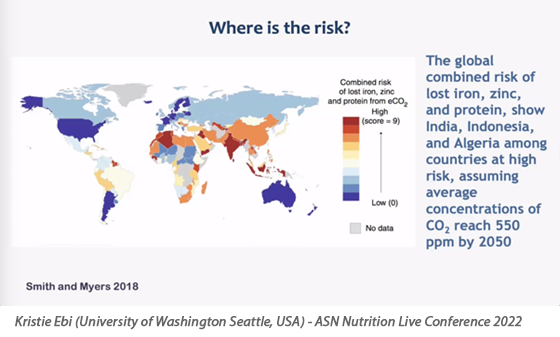
The altered plant allocation of carbon can also alter access to soil nutrients and contaminants, such as cadmium and methylmercury. Elevated soil temperatures increase arsenic uptake in rice. Higher CO2 concentrations could also affect livestock through effects on plant nitrogen content.
The impact of the global climate change are plurals.
For Kristie L. Ebi, there remain opportunities to improve future food security and things to do, at many different levels:
- Improve governance and leadership
- Secure food entitlement
- Pursue and encourage technological breakthroughs (water quantity and quality, more investment in research for sustainable agriculture)
- Address food demand and supply
- Improve food production models
For the scientists, as John Finley concludes, the priorities are to:
- have a global approach and close gaps between consumer choices, environment, human health and food production
- adopt a multidisciplinary approach, understand constraints & issues across all dimensions.
- have diversity of opinions,
- keep in mind that “we don’t make policy: we conduct science to inform policy”


